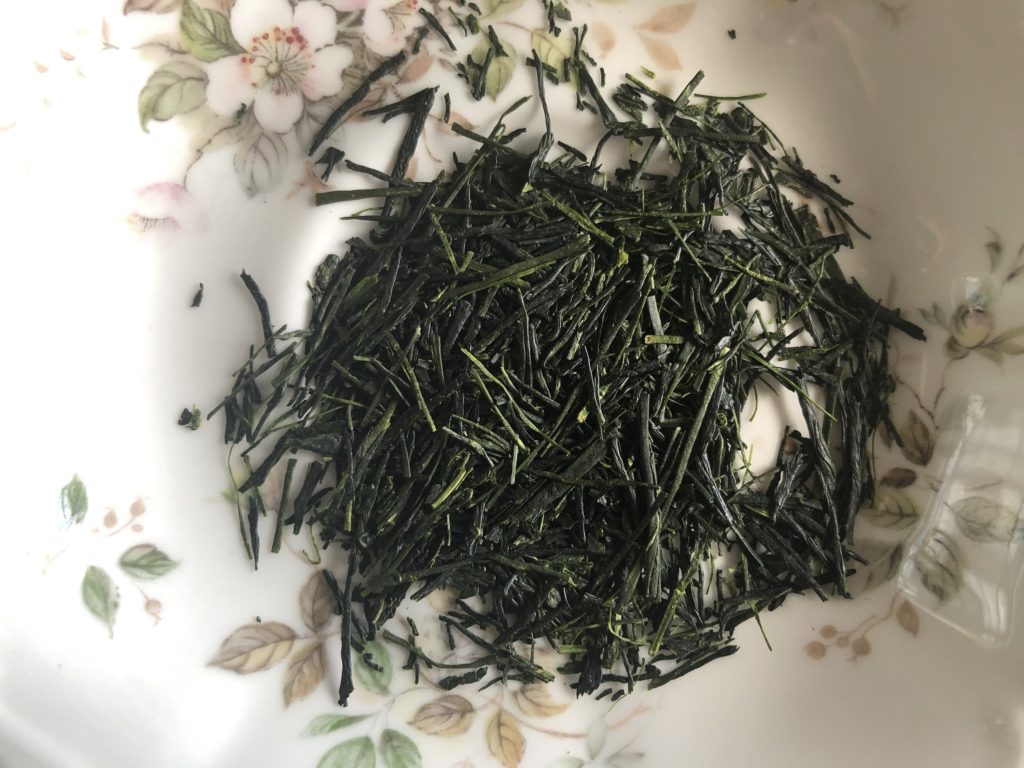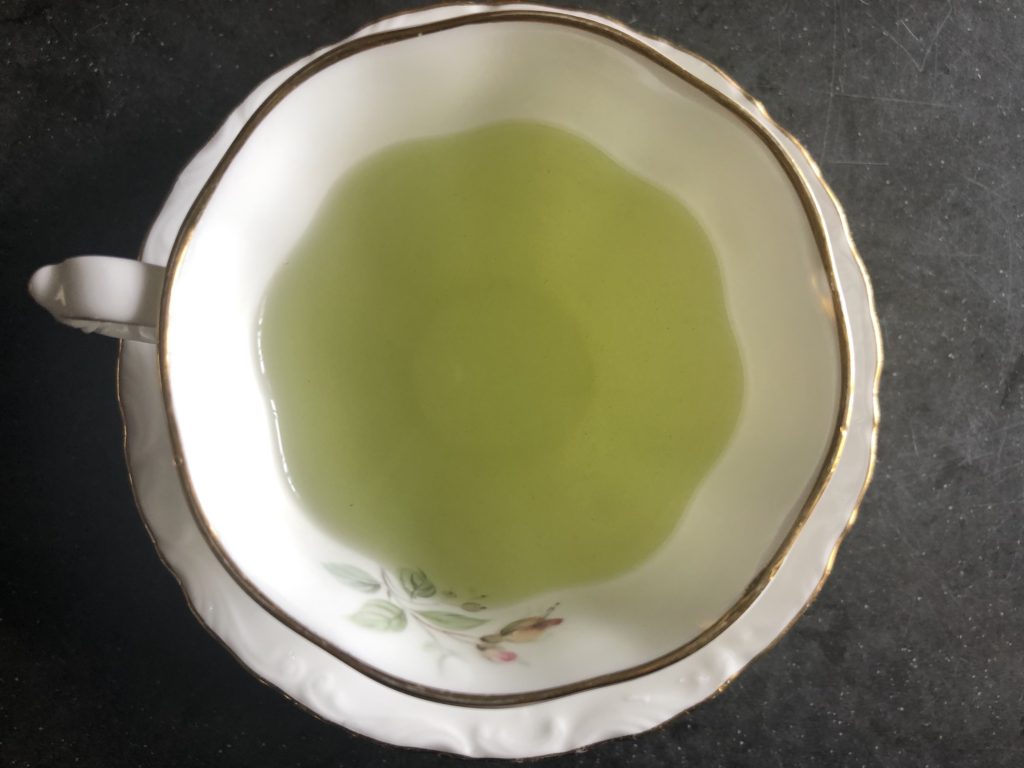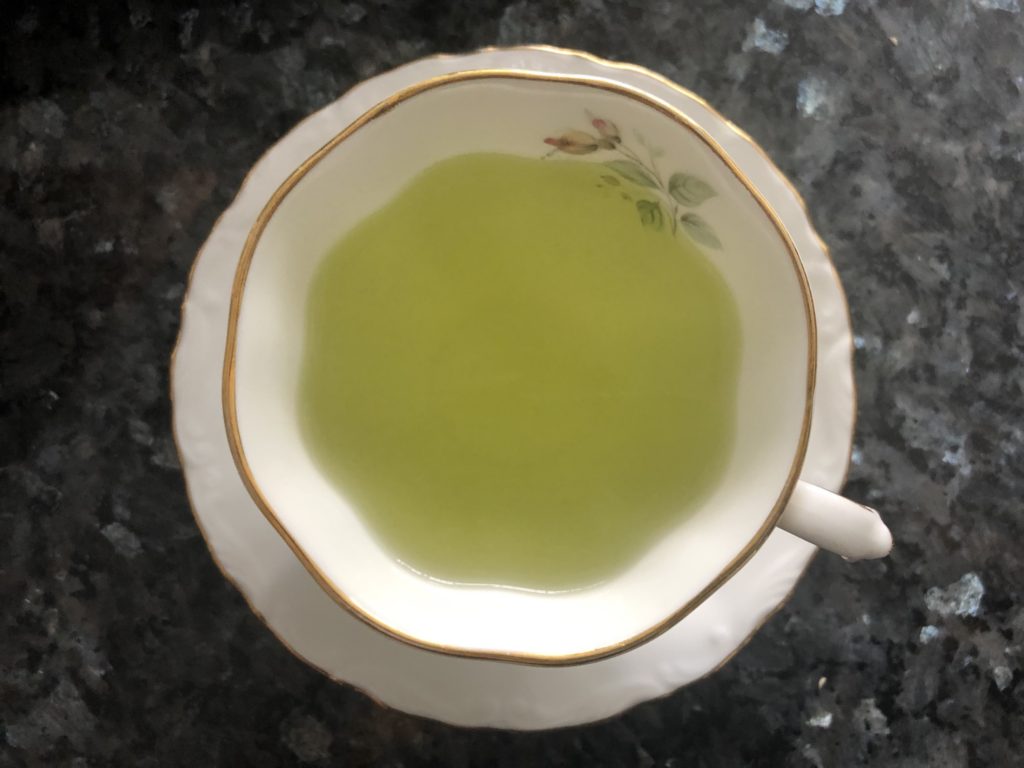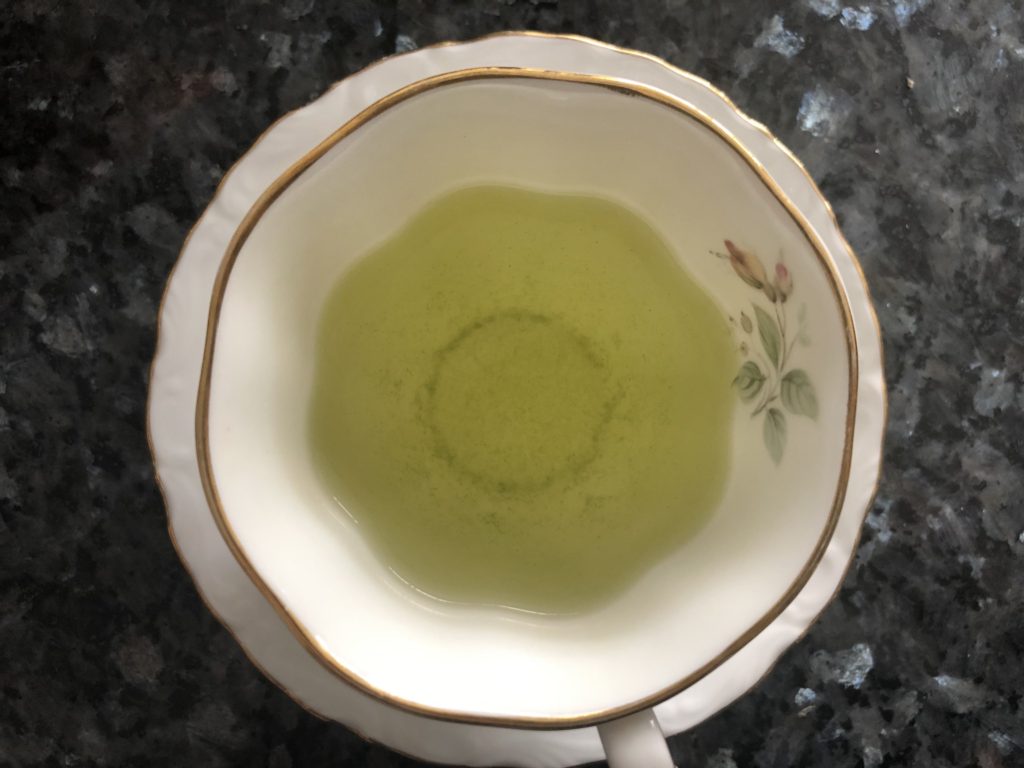I’m actually really happy (and surprised) that we’re at tea #7 of the Sayama teas! It means I’ve only got 2 more teas left so I may actually finish reviewing all the teas before the giveaway – I’m doing it with a friend so there’s still a bit more for us to sort out.

Anyway, let’s move on to the tea! Don’t you love the name? Haru-midori translates to “Spring Green” so I’m hoping for lots of spring notes with this.
First Impressions

The dry leaves had a strong grassy scent and I also caught something sharp, almost tangy? It smells amazing!
Tasting Notes
I don’t normally do this, but my tasting experience from session one and two varied quite a bit so I’m writing them up separately. I thought about it, and I realised that the water from session one was a bit cooler, which probably explains the difference in the tastes! Amazing what a different temperature can do for a tea.
Session 1

Round 1: The tea liquor is a pretty green colour and the first thing I taste is the umami note, followed by some sweetness to balance it out. It’s very smooth and for some reason, the umami note grows stronger the more I sip the tea. It’s very unusual and enjoyable for me.

Round 2: The grassy notes are starting to come out in this round. The umami isn’t as strong as round one but it’s still distinct. I really like how the grassy, sweet, and umami notes balance each other.

Round 3: The tea has definitely shifted from dominant umami to a dominant grassy note, and it carries on for the next two rounds.
Session 2
Round 1: The tea starts with prominent sweet, grassy and umami notes. I was waiting for the umami bomb that I got in the first session but it didn’t come. I normally try to make both sessions as equal as possible, so this was a surprise.
Round 2: The flavours seem to have developed a bit more here. Still no umami bomb but the grassy, sweet, and umami notes taste a bit deeper, somehow?
Round 3: The notes of the tea in this round are pretty consistent, though they seem to develop a bit more with each round. I’m still getting a strong umami note (especially in the aftertaste), but it’s well balanced with the sweetness and grassiness of the tea, plus something like a floral note. Great aftertaste even in the third round.
I also tried blending this tea with strawberries (I really miss Nayuki’s strawberry oolong, even though it is expensive) but I misjudged the ratio of tea to strawberry. Or perhaps I need to steep the tea longer – maybe using a cold brew method. I’ve still got some blueberries, which I know aren’t the same but blueberry + tea is sounding appealing for some reason…
About the Tea
I don’t actually have any tea cards because this is not a cultivar developed by the Sayama Tea Research Institute, but according to My Japanese Green Tea, the Haru-Midori has a “high umami flavor and few bitterness and astringency“. I’d also recommend checking out Japanese Tea Sommelier’s blogpost on his experience brewing the tea – his experience sounds a bit more like my session two, while the high umami flavour mentioned in My Japanese Green Tea sounds like my session one!
Oh! And while I don’t have tea cards, I do have some information from the NPO Agriculture Support Team in Sayama. They describe the Haru Midori this way:
“It is a variety with an overwhelming umami that is as good as Gyokuro. Slowly brew with low 60-70 ℃ water. It becomes a delicious, clear and sweet tea. Because it is difficult to cultivate, it is a rare tea with low production.”
About the Farm
According to the NPO Agriculture Support Team in Sayama, Okutomi-en is:
“A mid-sized farm that has a tea garden of 3.1 ha in Sayama City, Sayama. Mr Masahiro Okutomi, the young owner of this tea farm has active entered Japanese tea competitions overseas and he won the gold in matcha category at Cest Bon le Japan 2018 in France, and the gold medal at the Great Taste Award 2013 in England”.
I’ve actually bought their matcha and one more cultivar, so I’m looking forward to trying both!

[…] note on this second steep. At that time, I thought it would be interesting to compare this with the Haru-Midori, which also has a pretty strong umami note. In my second session with the tea, however, the umami […]